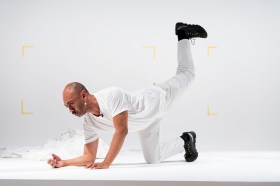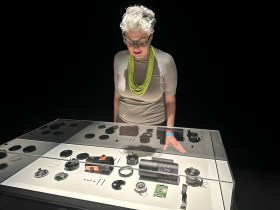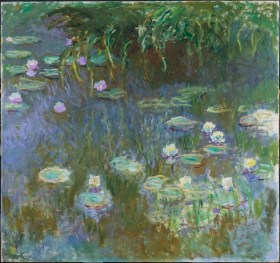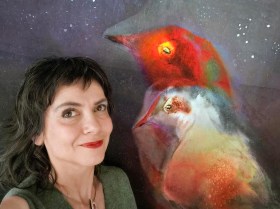Janet Dawson: quick links
At 90-years old, it is surprising that Far Away, So Close is the first retrospective of Janet Dawson’s work. But then, it is a fine line between a survey and a retrospective (the later taking a broader career view). A number of surveys have celebrated Dawson’s career at various stages, including the National Gallery of Victoria (1979) – presented not long after her Archibald Prize win in 1973 and consolidating a heady few years embedded in the scene of abstractionists in Melbourne and Sydney.
Another was at the National Gallery of Australia (1996), which came after 20-years of living on the land in regional NSW – a shift that offered a new approach to abstraction within her practice. And then, there was the touring survey exhibition by Bathurst Regional Art Gallery (2006), which again reflected on the nuances of Dawson’s career as it moved between a distinctive gestural abstraction, realism and figuration.
Janet Dawson: renewed appreciation
Some 20 years on, curator Denise Mimmocchi gives viewers a renewed appreciation of Dawson’s unwaivering need to paint her world. In her exhibition (and accompanying monograph) at the Art Gallery of NSW, she pulls those six decades of making together across more than 80 paintings of scale and importance.
It is an opportunity to make sense of, what on the surface can read as quite a disparate career stylistically – especially if one compares the bookend galleries of this exhibition: the first with it bold broad, colourful abstractions made as a young artist after just returning from a travelling scholarship to London, Paris and Rome.
To the last gallery, which hones that observation of the world into intimate – largely realistic – studies of day to day life on her beloved property Scribble Rock at Binalong, in regional NSW.
Janet Dawson: constant reinvention
In many ways, that last gallery is the sum of the three, chronologically hung galleries that proceed it, and while it feels at odds, there is something remarkable about an artist who can constantly reinvent and extend oneself, deep into their late studio practice.
A hint is revealed in the first paintings Mimmocchi offers in this exhibition: a self-portrait painted in 1953,under teacher the celebrated portraitist William Dargie, and Untitled (bird) a painting of a pigeon from 1956, under the tutelage of the more progressive modernist Alan Sumner. In the same way that the bookend galleries are so different, so too are these early paintings. Dawson can pivot easily, demonstrating not only her dexterity, but also a hunger to absorb new ideas.
This first gallery paints a picture of an artist with a great future. Printmaking opened a door to a new confident abstraction, and painting such as Viponds tune 1961, The origin of the Milky Way 1964 and St George and the dragon 1964 in this gallery, remain so fresh to the eye today – beautiful constructed and engaging paintings.
Central to the room is a suite of coffee tables created for Laminex in 1964 and 1968, which extend that modernist moment into the home, which the mid 20th century did so well. They are deliciously retro and covetable today.
The second gallery continues the momentum of Dawson’s career. She was one of only three women included in The Field (1968 ) – that iconic NGV exhibition that shaped the careers of so many artist, and indeed Australian art history. We see that painting (well a version of it on canvas) Wall 2 1968-69 here, alongside the luminous works Rollerscape 2 (1968) – a shaped canvas typical of interests of the day, to Jubilee oval 1973, that has so much touchpoint of modern art moment floating within is elegant form. It is a sure highlight in this show.
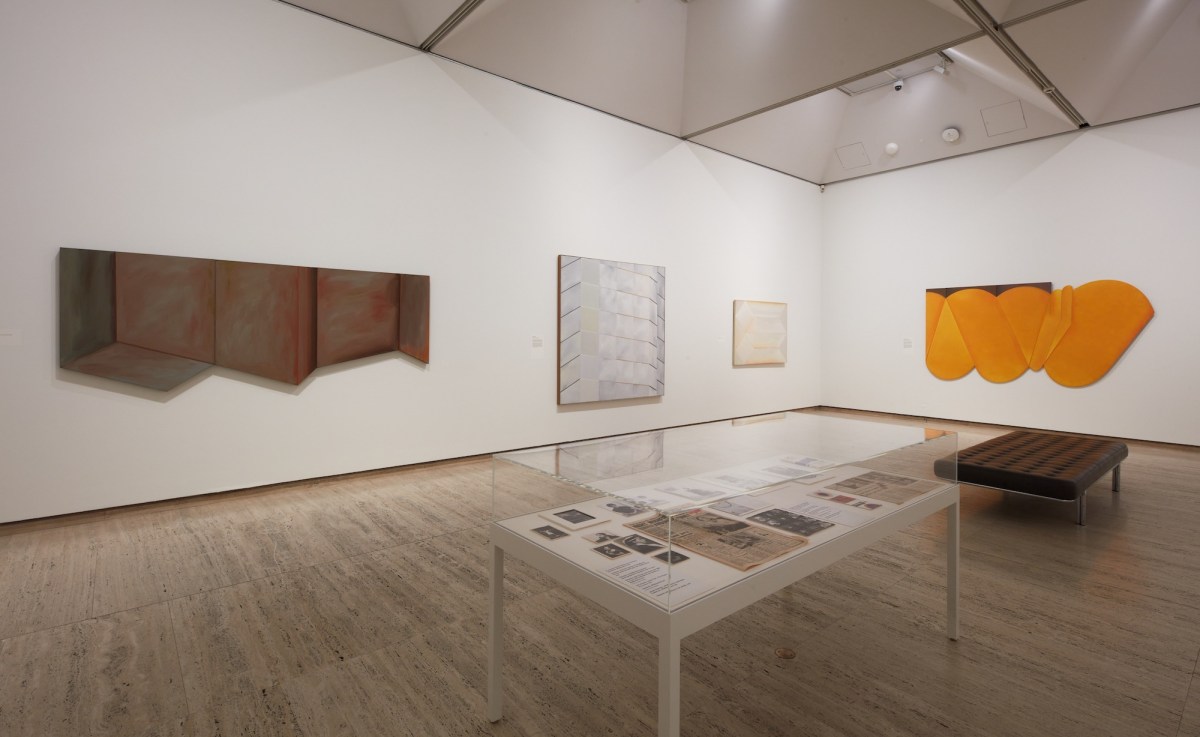
As an artist, now in her late thirties, this room almost bristles with energy and ambition. But things shift again. The next gallery that energy is redirected to the natural landscape more literally, moving from her studio on the edges of Sydney Harbour, where she’d been inspired by its light and colour, to rural New South Wales where she spent the remainder of her career.
Read: Neighbour at the Gate review: NAS Gallery exhibition
This shift started with expansive paintings and bold gestures, such as in Cave Hill 1976 and Balgalal series 5 – Sunday morning 1975, where the dabs of paint both capture the light and variegated colour of gum trees, but are equally a demarcated field of marks on a surface.
The night sky also became an interest for Dawson, and its immense palette and narrative she captures in her Foxy night series of 1977. They sew a thread to her later rondelle paintings of night skies from 2000 which, while more literal, call upon those familiar brushy gestures. And in an uncanny connection, these rondelles also connect with those round tables in the first gallery.

Janet Dawson: living on the land
As Dawson physically and emotionally becomes more in sync with the landscape, her work becomes honed on the minutiae of living on the land – pictures of cabbages and cauliflowers, animals and grasses are everyday subjects – as witnessed in this final room of her retrospective.
While it is easy to brush off a lack of consistency across her oeuvre, it is a quick surface reading that Mimmocchi aims rewrites in this retrospective. Viewers will decide if she achieves that.
What is certain, however, is that Dawson is an incredibly accomplished artist who was always pushing her practice forward. She was never complacent or rested easy in duplicating her successes. She had the ability to fuse sensations and experiences of the natural world with more edgy studio concerns, and it is a balance not achieved by many. Her’s was a persistent search for understanding, and as viewers of this retrospective, we have the privilege of witnessing that artistic journey.



